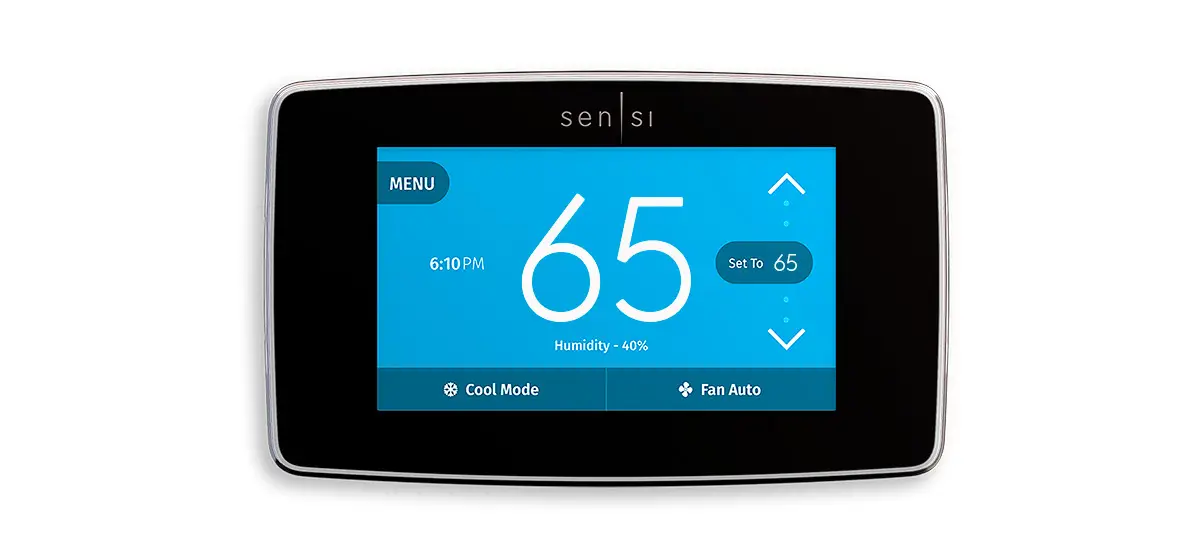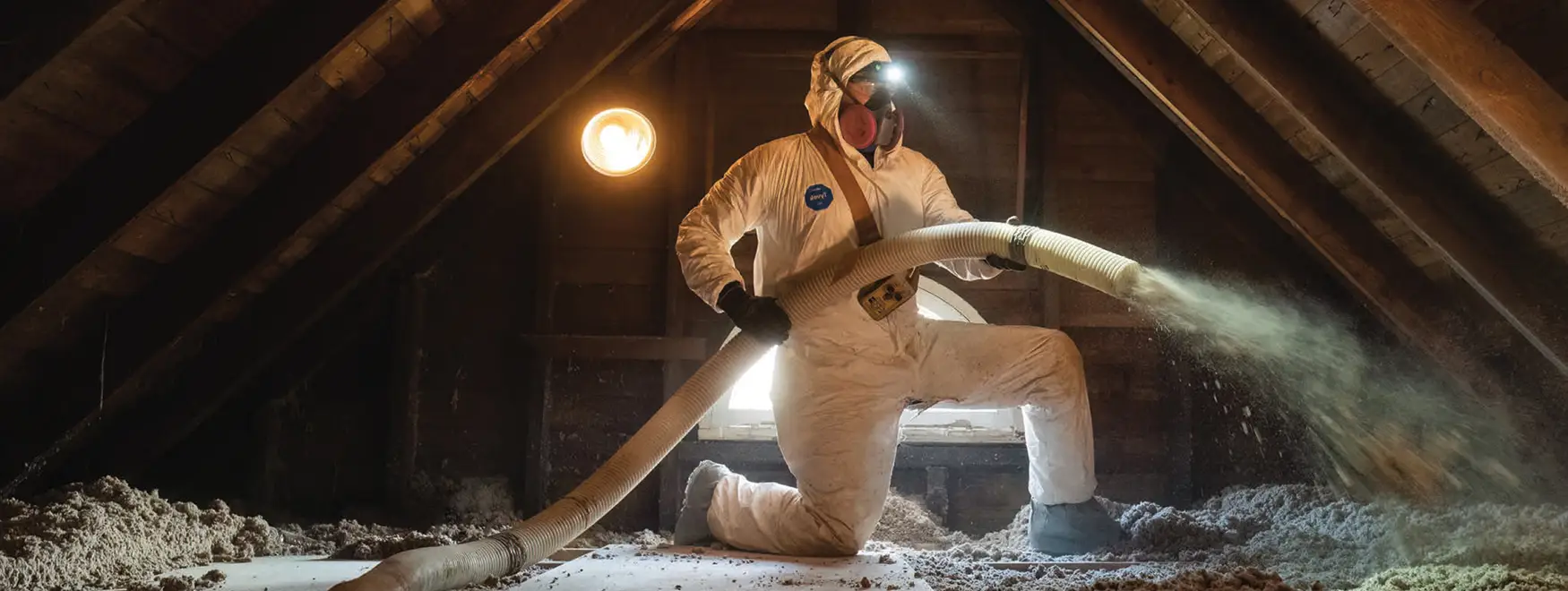
That Time of Year Protect Your Castle
GettyImages
You can guard your home against an unexpected loss of power. When you do, you’re practicing energy resilience. This term “energy resilience” might be new to you, like “drip” or “rizz” or resin-based clogs. We’ll catch up on these other trends at another time. For now, let’s focus on the term itself. According to the U.S. Department of Energy, energy resilience is “the ability of the grid, buildings and communities to withstand and rapidly recover” when power goes down. In this article, we’ll take this concept and put it to use in your home.
It’s time to get defensive
The best way to wrap your head around the idea of energy resilience is to think of your home as a castle with a protective moat. When things get out of hand outside your castle, you raise the drawbridge by using the energy resilience tools you’ve adopted in your home. Yes, in this analogy, you not only have a castle but a moat, too. Cool, right? The point of this comparison is to develop a certain amount of energy self-sufficiency and to have that level of preparation to make you feel like you’re safer and more secure in your home.

GettyImages
 Cover your … self
Cover your … self
Did you ever use a magnifying glass to burn a piece of paper? Well, imagine your window is the magnifying glass and the paper is your home. A recent study found that 75% of window coverings remain in the same position daily. Don't let this happen to you, be the other 25%. That direct sunlight magnified through glass can really heat up a home. Keeping any window covering closed during the summer is a great opportunity to save with things you already have in your home.
Better yet, instead of blocking the sun, you could harness its power through solar panels — an effective way to generate electricity during the sunny summer months and year-round too. Also, you can score up to a 30% tax credit for installing qualifying solar panels.*
*Please contact a tax professional or certified public accountant to confirm details specific to your qualifications and eligibility.
 Thermostat? Or energy efficiency secret weapon?
Thermostat? Or energy efficiency secret weapon?
When the leaves turn and the air gets crisp, you can embrace tactics to reduce your energy usage and increase your energy resilience. Managing your thermostat is a simple way to gain an advantage. During the day, set the thermostat as low as your personal comfort will allow — don’t be a hero on this one. Dropping just a few degrees can make a difference. No one needs to be walking around in parkas or anything.

Now, when you hit the sack, that’s when you can really save. It turns out the best temperature for sleep is roughly 65°F. And setting your thermostat to that temp at night can really help you save. Do you like money but hate … doing things? Well. All of this adjusting can be done automatically with a smart thermostat. This ingenious device not only can be programmed to do your temperature bidding, but many models can also learn your habits — like when you typically go to bed — to help you save. Don’t have one? No worries. You could be eligible to have one installed at no additional cost when you book a Quick Home Energy Check-up with BGE (more on that in a minute).
Curious About Smart Thermostats
Learn more and get a rebate up to $100 on qualifying models. Visit BGESmartEnergy.com/Smart3.
Another timely trick for the fall is sealing air leaks in your home. Gaps in your windows, chimney and recessed lights can be your three main culprits. One simple trick is to use a very high-tech leak detection device — tissue paper. Simply hold the tissue paper near potential air leaks. If the tissue moves or flaps, you’ve got a gap to be filled. Once you find one, seal that sneaky airflow with caulk and weather stripping.
If you want to step up your air loss detection game, you can schedule a Quick Home Energy Check-up. A pro will walk through your home to check for air leaks and much more.
 Don’t look now, but your home is leaking
Don’t look now, but your home is leaking
Our friends at the U.S. Environmental Protection Agency estimate that 15% of your heating costs are lost to improper air sealing and insulation. The truth is, if you add up all the leaks in the average home, it would be equal to having a window of your home open every day of the year. Morning, noon and night — spring, summer, winter and fall — you are losing money.
So, when the temps take a nosedive, it’s the perfect time to step up your energy resilience game. Let’s start with insulation. Adding insulation will do more than warm your home. It’ll warm your heart. You’d think it was the love of family and friends, but you’d be sadly mistaken. It’s insulation. It’s always insulation.
We can also talk about strategically planting deciduous trees on the south-facing side of your home. A quick trick to determine which side of your home is facing south is to use the map application on your smartphone. Planting trees on that side can provide shade in the summer and let the sun better heat your home in winter. But again, you have an entire (figurative) open window right now. Go fix that first.
 It’s your air. Control it.
It’s your air. Control it.
It’s nature’s season of rebirth. Green shoots of what will soon be grass begin to pop out of the ground, and we get the return of Pollen Season.
Spring is the perfect time to manage the air, and more specifically, the airflow in your home. You can turn off ceiling fans when you leave the room — they are there to cool you, not the room. So, if you’re not in the room, there’s no need for the ceiling fan to be on. Use the bathroom fan when showering or taking a bath to remove excess heat and humidity from your home.

Stephen Voss
The biggest difference you can make when better managing your air during these months is with your heating, ventilation and air conditioning (or HVAC) system. When it’s working at its best, you can save energy and money. Generally speaking, about 43% of your bill goes to heating and cooling. One great way to manage this factor of your energy resilience is to schedule an HVAC Tune-up. The Tune-up can not only make your home more energy efficient, but your air quality can also improve—see Pollen Season above—and your overall comfort can increase. And, if you were digging the idea of getting your hands on a smart thermostat, booking an HVAC Tune-up through BGE is another great way to do just that. Oh, and as a BGE customer, your Tune-up and the smart thermostat are available at no additional cost.
In fact, an HVAC Tune-up can help you identify up to 95% of costly breakdowns before they happen. Talk about improving resiliency. So, you’re catching 95% of potential issues while saving 100% of the cost of finding 95% of those issues. That’s the math.
To sum up, energy resilience can be a holistic and impactful weapon when battling the elements year-round. By adopting these and many more tactics, you can not only save energy and money but also be a part of building a more sustainable and climate-resilient future. It’s the perfect option for your castle and your moat.
